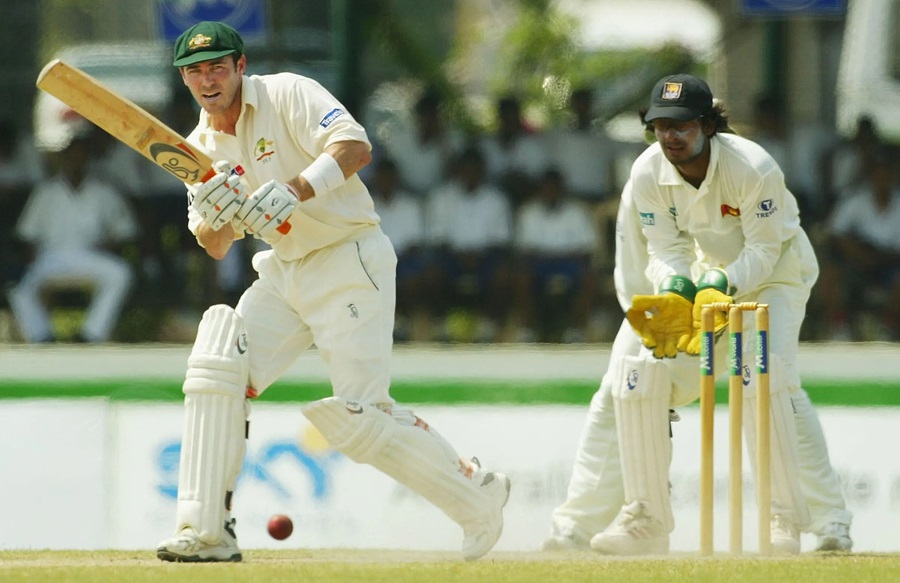Batters - bat tap, spring load the feet, look to score
Peter Procopis | July 02, 2024

Just over a year ago, I published the piece below on the ongoing importance of dynamic movement for peak batting performance.
My purpose was to provide a counterpoint to a disturbing trend over recent years towards batting coaches focusing on stillness and stability at the expense of dynamic movement.
My concern, in particular, was for young batters between the ages of 8-16. It’s vitally important that youngsters learn full-body, fluid, dynamic movement when batting. There is plenty of time to stabilise and refine later. But if you miss the opportunity, for example, to become a dynamic ‘skip-stepper’ and ‘spring-backer’ against spin bowling during that period, it is very, very difficult to acquire the skill as an adult.
The same is true of ‘bat-tapping’- tapping your bat old-school style on the ground- or what I call ‘bat waggling’- pumping the bat up and down mid-air. A youngster needs to be given the opportunity to achieve some flow in their set-up; some rhythm and fluidity in their hands, wrists and arms as the bowler approaches.
If coaches must get their young charges to bat-waggle (bat up in the air) rather than bat-tap, then at the very least they should encourage a rhythmical, fluid motion in which the bat is unweighted correctly.
I encourage coaches, players and parents to first teach bat-tapping to youngsters. As batters develop and face quicker bowlers and more challenging short balls, you may find they begin looking towards more of a bat-waggling technique. Essentially, by that natural development point, they will have all the benefits of rhythm and fluidity already, so it becomes a reasonably easy adjustment to move towards a mid-air waggle- their crucial unweighting and releasing of tension just occurs mid-air instead.
The worst thing you can do early on in a youngster’s batting journey is to teach them to lift their bat up and keep it still as the bowler approaches. Please don’t do that. You’ll be unknowingly installing a ceiling on their development. Let them flow; let them move. Refinement and stabilisation can be taught relatively easily later on. But flow and dynamism cannot.
Every day at present on my Social Media feeds, I am watching and listening to posts by some of Australia’s biggest, most prominent cricket coaching businesses. There is plenty of good, harmless, potentially helpful advice in the batting space. But there is also a lot of poor coaching around abbreviated footwork and ‘stillness’ and ‘batting in the box.’ Most often, it’s the result of the coaches/business not understanding the 8-16 yrs development spectrum. Instead, in their teaching they frequently employ refined and sophisticated concepts used by professional batters, who are often 10-20 years beyond that formative phase.
Rather than just highlighting problems, can I also offer anyone out there in my cricket orbit, assistance. If you’re coaching or parenting a youngster, or even if you’re an ‘oldster’ up for a new challenge, please don’t waste your precious dollars especially during these challenging times, on advice from what are now often franchised cricket coaching outfits with cookie-cutter template sessions and McDonalds-style simple, young coaches. Instead, send me a public (on here) or private message and I’ll share what I’ve learned over 35 years in this space. If it works, great, you’ve saved yourself some precious dollars and helped your player. If it doesn’t, no worries, I’ll try again…and you’ve lost nothing.
It’s bye for now But before I go…
Remember, batters, 1, 2, 3- set the camera, spring-load the feet, look to score.
A batters footwork, to move or not to move
Stand still. Don’t overstride. Stable base. Widen your stance.
There is something valuable in each of these phrases for batsmen. Stillness and stability are certainly elements of a sound batting technique. But batsmen and coaches shouldn’t sacrifice the springy, dynamic footwork of a Bradman, Chappell, Lara, Tendulkar or Ponting at the altar of the stability and stillness trend. Read more








